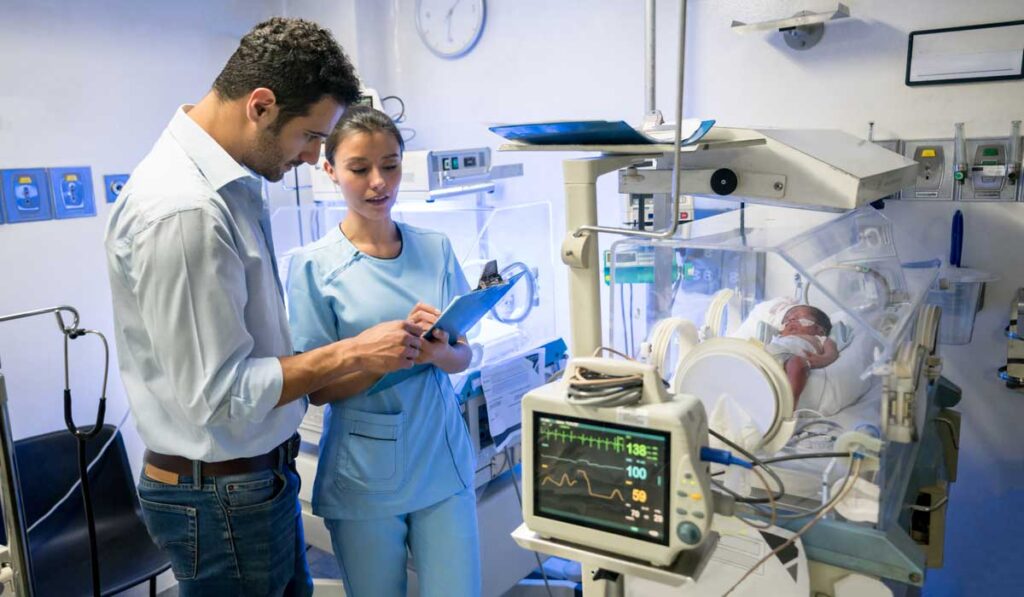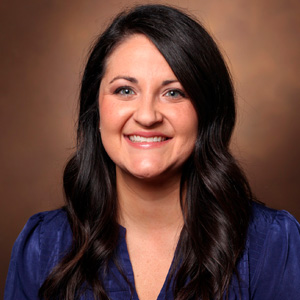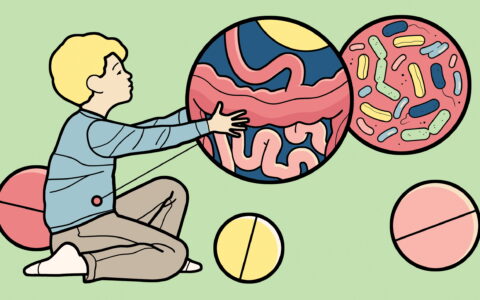Patient activation is topical among physician-researchers, as more patients become informed self-advocates to successfully navigate medical systems and optimize their care.
As defined in the medical world, activated patients are those having the knowledge, confidence and skills to manage their own health care. Accordingly, optimization for NICU patients often relies on the ability of parents and caregivers to stay informed and engaged throughout a child’s stay.
Yet, the question of what “activates” parents and just how it impacts children’s outcomes is new to the research arena.
Ryan Skeens, M.D., a neonatologist, and Gretchen Jackson, M.D., a neonatal surgeon, recently studied activation levels among parents at Monroe Carrell Jr. Children’s Hospital’s level four NICU. Results of the pilot study, published in the American Journal of Perinatology, showed sociodemographic differences to be insignificant overall, but higher levels of engaged activity in younger parents and in mothers versus fathers.
“We know supportive parents who are strong advocates for their children and engage rapidly in the care of the infants, starting in the NICU, tend to be more sensitive to their infant’s cues, and their children have improved academic, social, and physical outcomes,” the authors wrote.
Activation Matters
In adult patients there is a growing body of evidence which supports the association between higher Patient Activation Measure (PAM) scores and improved health outcomes, greater satisfaction with care and decreased health care costs for individual patients, Skeens said.
Although the authors note a few studies showing a similar dynamic amongst parents of pediatric patients, Skeens says there none thus far about parent activation in the NICU setting.
“While patient activation, health literacy and self-efficacy have been well studied in the adult world, this has not been mirrored in pediatrics,” Skeens said. “We wanted to investigate and describe activation levels in parents of neonates admitted to the NICU, and explore whether these correlate with sociodemographic and clinical variables, and whether these scores change over a parent’s time in the NICU.”
Parental Activation Defined
The parent version of the PAM (P-PAM) used in the study stratifies a quantitative score from 0-100 into four levels of activation, from level 1, where the parent may be overwhelmed and/or disengaged, to level 4, where the parent is a strong advocate for their child’s health, shows comfort in navigating the health care system, and is able to maintain this level of activation under stress.
The researchers examined P-PAM scores of 96 parents of neonates surveyed at admission. Sixty-nine parents also completed a P-PAM survey at discharge, and 60 completed 30-day follow up questionnaires. Fifty-four parents completed the P-PAM at all three contact points.
The researchers explored the distribution of P-PAM scores and changes between contact points. They also looked for associations with sociodemographic characteristics, health literacy scores and newborn illness severity. Finally, they looked at associations with short-term clinical outcomes and hospital readmission rates, as well as urgent care and ED visits in the 30 days after discharge.
“While patient activation, health literacy and self-efficacy have been well studied in the adult world, this has not been mirrored in pediatrics.”
P-PAM Scores Dissected
All of the P-PAM scores measured high – at a level four. Specifically, P-PAM scores averaged 81.8 upon admission, 88.8 at discharge and 86.8 at the 30-day follow-up.
“We found, overall, that P-PAM scores in our cohort were higher than scores reported in other parent activation studies in the pediatric patients, 68.6 to 73, and substantially higher than PAM scores reported in the adult literature, low 60s,” Skeens said.
Lower engagement and activity levels were observed among male parents, parents with low health literacy, and parents of patients who were having or in need of surgery.
“This study provides preliminary evidence that parental activation in the NICU setting is high, and there is an overall increase in activation from admission to discharge, then a decline to admission levels at 30-day post discharge,” Jackson said.
“This may suggest that even without a specific intervention, daily interaction and teaching with the health care team may increase a parent’s activation,” Skeens added.
Teaching the Importance of Parental Activation
Skeens is folding the learnings from this study into an elective course she co-teaches at the medical school. The course focuses on medical students interviewing parents, assessing needs and levels of activation and engagement, and providing resources that meet those identified needs.
“Armed with deeper insights, these students may grow to play a critical role in the babies’ health in ways they might not have given much thought to,” she said.






